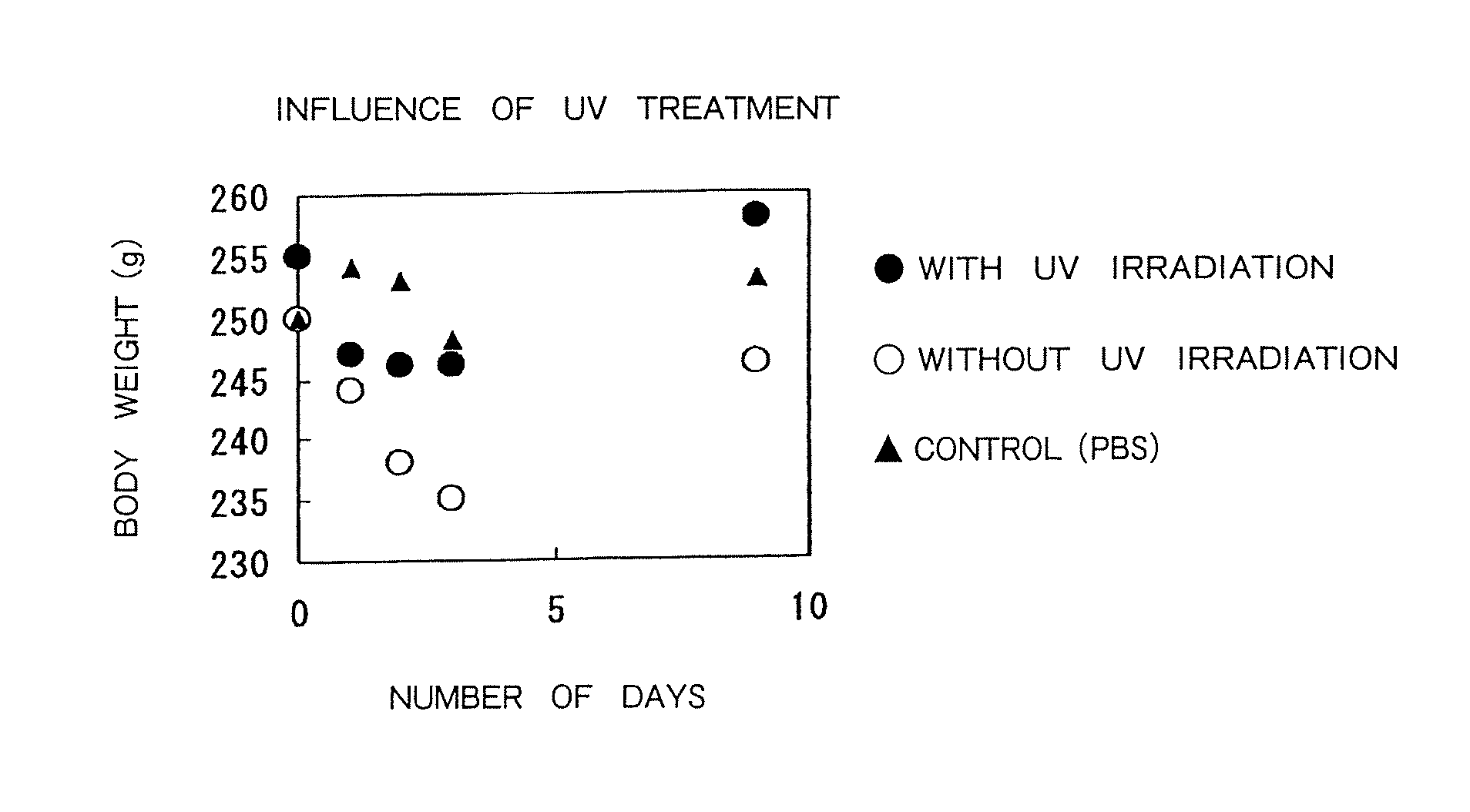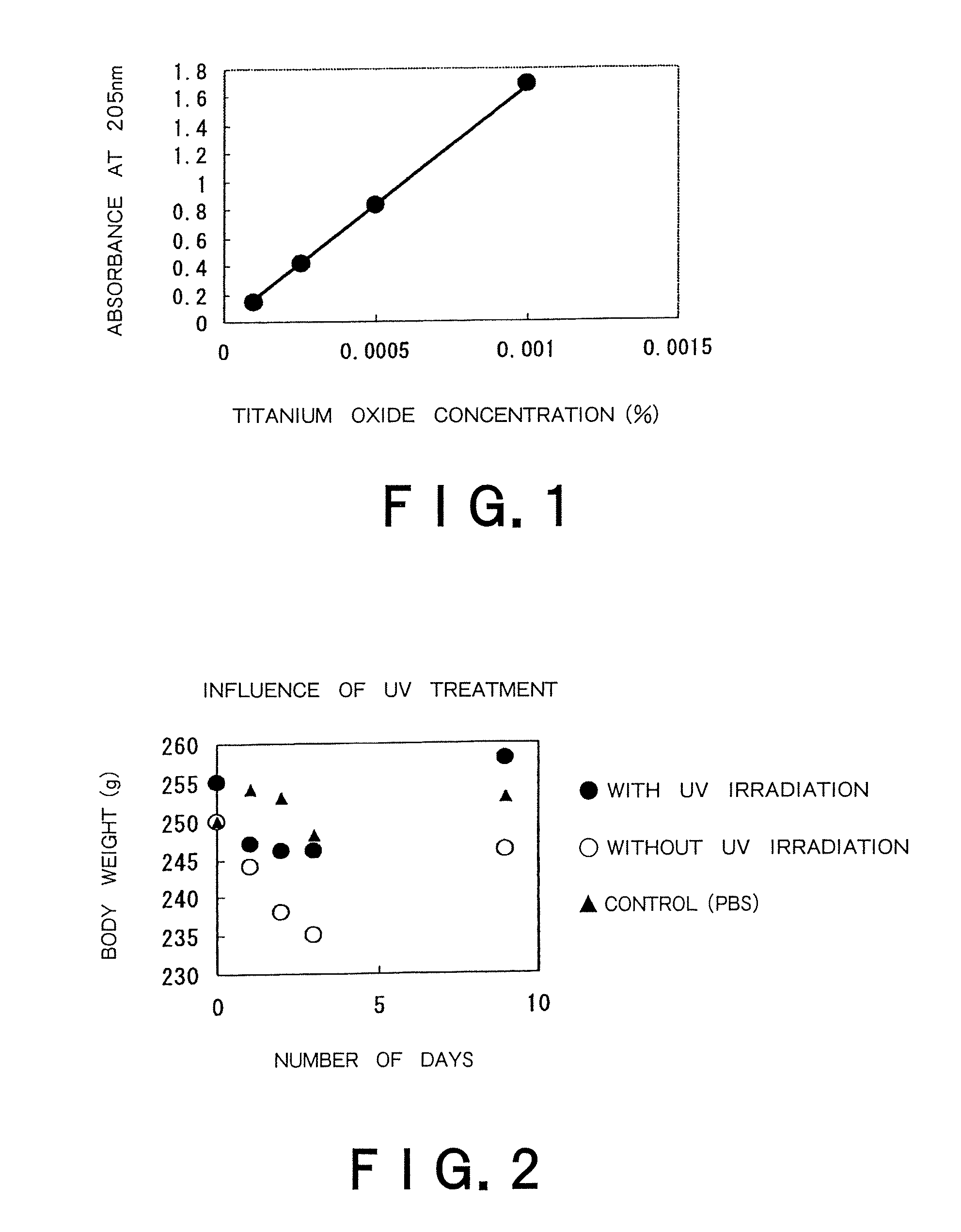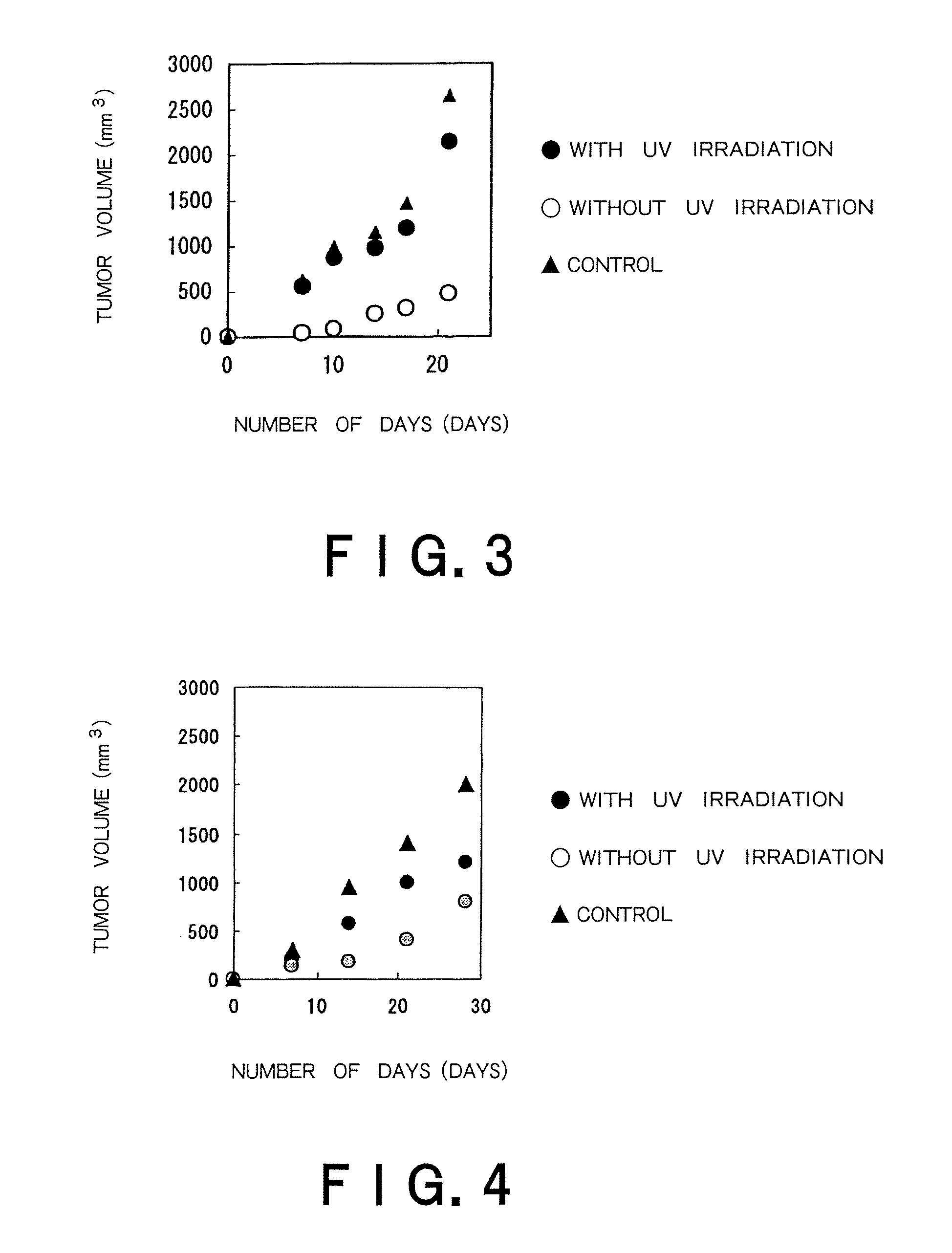Therapeutic method of administering pharmaceutical titanium dioxide composite and light irradiation
A titanium dioxide composite with a hydrophilic polymer and pharmaceutical compound, administered and photoexcited to decompose the drug, addresses the issue of adverse reactions and non-specific distribution, achieving localized drug delivery and reduced side effects.
- Summary
- Abstract
- Description
- Claims
- Application Information
AI Technical Summary
Benefits of technology
Problems solved by technology
Method used
Image
Examples
example 1
Preparation of a Dispersion of Titanium Oxide Nanoparticles Coated with Polyacrylic Acid
[0039]An aliquot of 3.6 g titanium tetraisopropoxide and 3.6 g of isopropanol were mixed and the resultant mixture was added dropwise to 60 ml of ultrapure water under ice cooling to perform hydrolysis. After dropwise addition, the mixture was stirred at room temperature for 30 minutes. After stirring, 1 mL of 12 N nitric acid was added dropwise, and the resultant mixture was stirred at 80° C. for 8 hours for peptization. After the completion of peptization, the mixture was filtered through a 0.45 μm filter and subjected to solution exchange using a desalting column (PD10, Amersham Pharmacia Bioscience) to prepare an anatase-type titanium dioxide sol having a solid content of 1%.
[0040]The dispersion liquid was placed in a 100 mL vial bottle and subjected to ultrasonic treatment at 200 Hz for 30 minutes. The average particle sizes of the dispersion liquid before and after ultrasonic treatment were...
example 2
Preparation of a Dispersion Liquid of Titanium Oxide Nanoparticles Coated with Polyacrylic Acid on which Adriamycin is Immobilized
[0043]Water was added to the titanium oxide nanoparticles coated with polyacrylic acid prepared in Example 1 to adjust the concentration of titanium oxide at 5% (w / v), and 10 mL of this solution was used for the following reaction. To the above dispersion was added 250 μL of 800 mM 1-ethyl-3-(3-diethylaminopropyl)carbodiimide and 500 μL of 100 mM N-hydroxysuccinic acid and a reaction was conducted while stirring at room temperature for 2 hours. The resulting solution was exchanged with a 10 mM HEPES buffer (pH 8.0) using a desalting column. To the resulting solution, 500 μL of a solution of adriamycin hydrochloride (SERVA) dissolved in DMSO at 2 mg / mL was added and reaction was conducted while stirring at 4° C. for 30 minutes. The reaction product was thoroughly dialyzed against PBS to obtain a dispersion liquid of titanium oxide nanoparticles coated with...
example 3
Evaluation of Safety of the Dispersion Liquid of Titanium Oxide Nanoparticle Coated with Polyacrylic Acid by Intravenous Injection
[0045]Five to ten ICR mice (male, body weight: 30 to 35 g) were given one-shot intravenous injection of the polyacrylic acid-coated titanium oxide nanoparticle dispersion liquid that is described in Example 1 and had been buffer exchanged into PBS from the tail vein.
[0046]The results are shown in the following table. No mice died even after injection of 1 mL of the 1% (w / v) dispersion liquid, and safety of the dispersion liquid of titanium oxide nanoparticle coated with polyacrylic acid was thus established.
[0047]
TABLE 1TotalNumber of miceTitanium oxidetitaniumgivenNumber ofDoseconcentrationoxide doseadministrationdead miceSafety(mL)(mg / mL)(%)(mg)(mice)(mice)(%)Sample0.51015105500.510.10.510101000.50.10.010.05101010040.10.010.433100PBS0.500077100500044100
PUM
 Login to View More
Login to View More Abstract
Description
Claims
Application Information
 Login to View More
Login to View More - R&D
- Intellectual Property
- Life Sciences
- Materials
- Tech Scout
- Unparalleled Data Quality
- Higher Quality Content
- 60% Fewer Hallucinations
Browse by: Latest US Patents, China's latest patents, Technical Efficacy Thesaurus, Application Domain, Technology Topic, Popular Technical Reports.
© 2025 PatSnap. All rights reserved.Legal|Privacy policy|Modern Slavery Act Transparency Statement|Sitemap|About US| Contact US: help@patsnap.com



